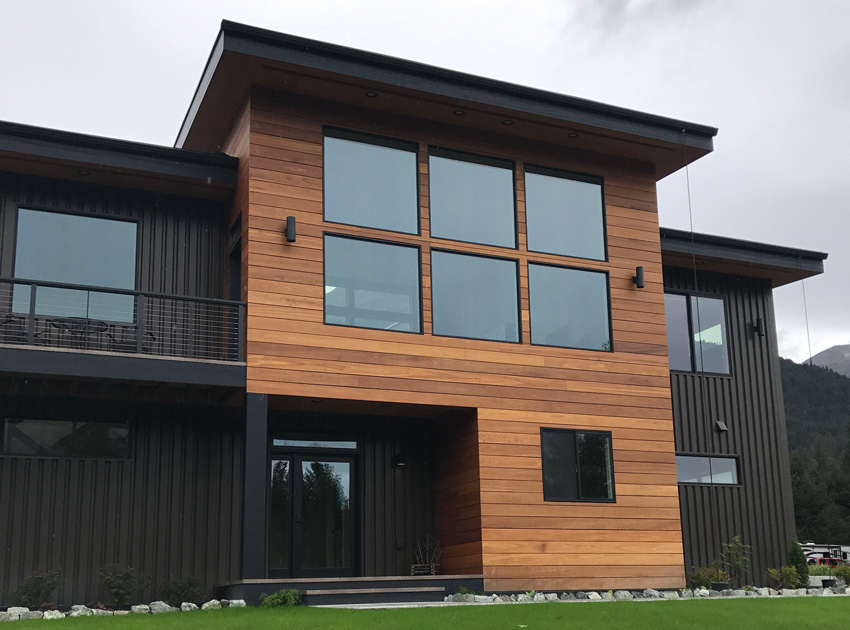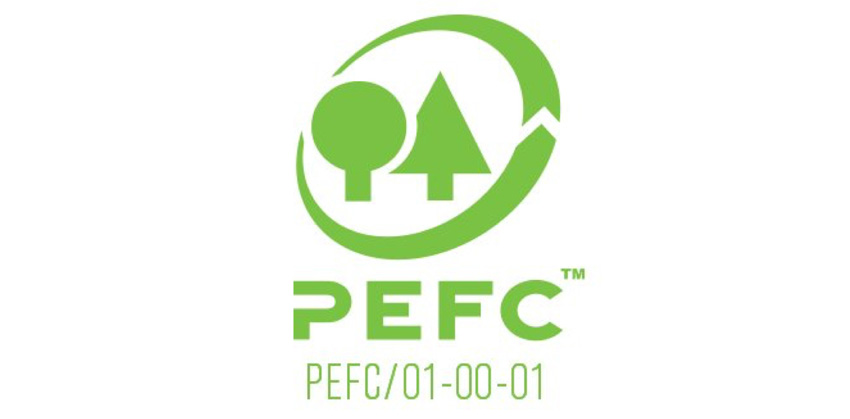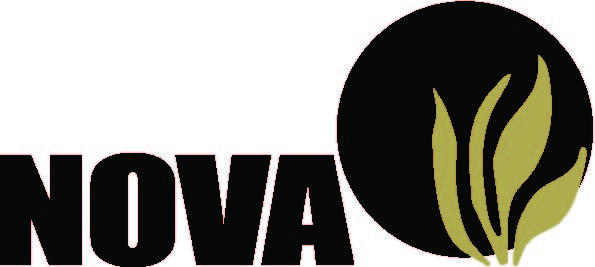Technology and Trends in Sustainable Tropical Hardwoods
Sustainable Wood for Exteriors
Wood has been widely recognized as a renewable, natural material that has less embodied energy than other building materials. Embodied energy is defined as the amount of energy that a product requires from the point of extracting the raw material, through its processing or manufacture, and its final transportation to a construction site. This so-called “cradle-to-gate” analysis of wood clearly shows that less energy is required to harvest, process, and transport wood products when compared with heavier, more energy-intensive building products, such as steel or concrete. Hence, wood is deemed to have less embodied energy as a product.
Recently, wood composite materials have been developed in response to reduced quality wood availability. These products have been presented as an alternative to solid wood products by combining wood fibers with synthetic fibers and resins. Wood composite materials have been touted as environmentally friendly since they can be made from recycled content. However, the correct recycled plastics can be difficult to source and sort, which often leads companies to resort to using newly created plastic to create a wood composite. If a company manages to find a recycled plastic source, it often includes petroleum-based plastics in its mix. In fact, there are many solid plastic PVC products containing no wood fiber at all. Most of these PVC and composites are not recyclable, eventually creating even more plastic waste. These products have a much higher embodied energy content than wood, reducing their environmental sustainability. Further, the structural support systems for PVC and composite decking and cladding must be carefully designed and constructed since they are not as strong as wood. Most notably, the plastic content makes these products expand and contract, especially in length, due to thermal conditions, whereas wood has a negligible amount of thermal movement.
Legality and Sustainability for Tropical Hardwood
Architects need to properly specify the type of wood for projects on our client’s behalf, and therefore we need to reference reliable third-party sources who focus in these areas. When dealing with wood that comes from international sources, there are some specific specification criteria that can be referenced. First is to assure that it is being legally imported. This point is discussed as follows.
U.S. Lacey Act
In the year 1900, the United States government recognized a need to prevent the trafficking of illegal wildlife and related items into this country. This recognition led Congress and President McKinley to sign into law the Lacey Act. In 2008, that law was amended to include plants and plant products that include timber, wood products, and paper. This was a landmark move, making the United States the first country in the world to ban trade in illegally sourced wood and plant products. This is now the minimum requirement that all wood imported into the United States must meet to be considered a legal import. As a result, and in compliance with the Lacey Act, a statement in architectural specifications needs to indicate that all wood from non-U.S. sources is legally imported.
The U.S. Department of Agriculture (USDA) Animal and Plant Health Inspection Service (APHIS) is the agency charged with enforcing this law. It works with other organizations, such as the Fish and Wildlife Service (FWS) and CITES, to focus on two aspects of the law. First is the legality requirement. This means that any wood imported into the United States must have met all of the laws that exist in the country of origin of that wood. For example, if a particular country bans the cutting of wood in a particular area or of a particular type, it is deemed illegal and rejected from entry into the United States. Ignorance of the laws of those countries is not a defense and applies regardless of who did not comply (i.e., the importer, the exporter, the sawmill, the forester, or any other party). The second focus is on proper documentation for wood imports. This involves filing paperwork with APHIS that declares information about the wood, including the scientific name (genus, species), the value of the wood, the quantity in a shipment, and the country of origin where the wood was harvested.
The United States has a long history of effectively enforcing the Lacey Act. Penalties can be severe and include forfeiture of the shipment, significant fines, and even jail time for violators. The law recognizes different levels of violation as well as a standard of reasonable “due care.” This means companies or organizations involved in professions or industries directly related to wood imports are reasonably expected to know how to comply with all relevant laws. Those tangentially involved, such as shipping companies, can still be implicated but are not necessarily held to the same standard of due care.
Legal Wood per ASTM and LEED
As a means to help the building industry with a resource to identify legal wood, a 2016 pilot credit was released by LEED as “a means to test LEED’s ability to address illegal wood in the building industry.” This pilot credit relies on ASTM Standard D7612–10: Standard Practice for Categorizing Wood and Wood-Based Products According to Their Fiber Sources as an objective basis to differentiate among 1) noncontroversial (i.e., legal) sources of forest products; 2) responsible sources of forest products (i.e., noncontroversial sources together with certified procurement systems or from forests managed using responsible practices); and 3) certified sources of forest products (i.e., noncontroversial sources together with a certified chain of custody). According to ASTM, the purpose of this standard and practice is “to provide wood products manufacturers, distributors, and retailers with a system to provide clear, objective information to communicate to consumers regarding product conformance to different wood-fiber tracing systems within specific forest management or certification programs. It provides a structure that segregates the different types of labels and tracing systems in use among major forest certification standards and other voluntary and regulatory standards governing the production of forest products.”
Under the LEED Legal Wood Pilot credit, (which is focused on legality more than sustainability), two of the three referenced categories are needed to meet the credit requirements. First, 100 percent of all wood is verified to be from legal sources as defined by ASTM D7612-10. These components include, at a minimum, structural framing and general dimensional framing, flooring, subflooring, doors, and finishes. Second, 70 percent of all wood (based on cost) used on the project is from responsible sources as defined by ASTM D7612-10. These components include, at a minimum, structural framing and general dimensional framing, flooring, subflooring, doors, and finishes.

Tropical hardwood that is legal and sustainable is used on a variety of buildings in North America.
SVLK (Sistem Verificasi Legalitas Kayu)
Some countries undertake their own programs to regulate and certify that wood being exported from their country is legal. A good example is the Sistem Verificasi Legalitas Kayu (SVLK) certification, which is Indonesia’s national timber legality assurance system. In order for any wood to be exported, this mandatory certification attests to its legality and can also indicate its sustainability, all based on a national multi-stakeholder consensus system. Since a good deal of batu hardwood is imported from Indonesia, this certification is important for that species.
Beyond legality, there are separate, independent organizations that look to higher standards of sustainability for wood. These organizations have typically identified three main criteria for sustainable wood. The first is to source wood that comes from an actively managed forest that uses sustainable practices, such as selective harvesting, natural regeneration, and minimal impact logging means. The second is documentation to identify the type of wood and trees that are being harvested and the precise locations where they were cut. Third is an established procedure to document a chain of custody that tracks harvested trees on their journey to a mill, through distribution, and ultimately to a construction site. All of these are important because it means there is independent, verifiable information that the wood used in a building comes from legitimate and sustainable sources rather than poorly managed or clear-cut forests. All of this is directly relevant to the environment because actively managed forests sequester more carbon dioxide and help reduce the amount of greenhouse gasses in the atmosphere. Then, ideally, we need to increase the overall footprint of well-managed, sustainable forests not just for wood sourcing but also for the health of the planet.
Some of the organizations involved in sustainable wood are summarized as follows.
The Forest Stewardship Council
The Forest Stewardship Council (FSC) is probably the best-known reference for sustainable forest management, wood harvesting, and delivery of wood products. In part, this is because it is the only organization that has been recognized by the U.S. Green Building Council for LEED certification. This has not been without some controversy since there are other organizations that provide similar functions and are more common in certain parts of the world. Nonetheless, it is common to specify wood that is FSC certified and request chain-of-custody documentation indicating that the wood delivered to a project site has indeed been tracked all the way back to a certified, sustainably managed forest. This has worked well for softwood lumber in the United States and Canada, but since FSC has a smaller presence in places like South America and especially in Southeast Asia, it should not be the only organization considered for tropical hardwood certification—it simply may not be available in certain parts of the world. It has been observed that the vast majority of LEED-certified projects have not pursued the credit for certified wood for any number of unknown reasons. Hence, not having FSC certification available may not be a deterrent in achieving LEED certification.
The Sustainable Forestry Initiative (SFI)
The Sustainable Forestry Initiative (SFI) is also a well-known and recognized organization that operates in the United States and Canada. It offers standards that are updated periodically on the three main areas of sustainable wood products: forest management, fiber sourcing, and chain of custody. In addition, it provides rules and guidance on how SFI product labels should be used and procedures for identifying the products in written materials.

The Programme for the Endorsement of Forest Certification (PEFC) is the largest forest certification system in the world.
The Programme for the Endorsement of Forest Certification
Lesser known in the United States, the Programme for the Endorsement of Forest Certification (PEFC) is an international, nonprofit, nongovernmental organization dedicated to promoting sustainable forest management through independent third-party certification. According to its website, “with 44 endorsed national certification systems and over 300 million hectares of certified forests, PEFC is the world’s largest forest certification system.” Unlike some other organizations, it works much more with small, nonindustrial private forests, with more than 19,800 companies currently holding PEFC chain-of-custody certification. The organization also points out that it “works throughout the entire forest supply chain to promote good practice in the forest and to ensure that timber and non-timber forest products are produced with respect for the highest ecological, social, and ethical standards.” It provides an “eco-label” that is earned so customers and consumers are able to identify products from sustainably managed forests. Further, it acts as an umbrella organization, for national forest certification systems in dozens of countries. In order to be certified under PEFC, each national forest certification system is subjected to rigorous third-party assessments to show compliance with PEFC Sustainability Benchmarks, thus assuring it meets international sustainability requirements.
When designing with and specifying tropical hardwood, it is important to recognize that there are different standards available that can and should be referenced compared to those that are solely used for North American wood products. This is true whether the building project is pursuing LEED certification or not, particularly since the international standards are more relevant and may even be more stringent.
Conclusion
Wood is a very desirable and sustainable building product. However, as concerns are raised over the use and availability of certain species, new ones are being sought out and increasingly used for projects of all types around the world. Architects seeking the natural appearance of wood for exteriors coupled with long-term durability are turning to many options in tropical hardwoods that are sourced and certified as sustainable by a variety of very credible independent organizations. In the process, they are creating appealing, sustainable, and durable buildings that their clients will enjoy for many years to come.
Peter J. Arsenault, FAIA, NCARB, LEED AP, is the author of more than 200 architectural continuing education articles. www.pjaarch.com
Stephen A. Getsiv is president of Nova Products Inc. and managing partner of Nova USA Wood Products LLC. www.novausawood.com
 |
Nova is a direct importer of premium-quality hardwood products with distribution throughout North America. Specializing in flooring, decking, siding, rough lumber, and industrial products, Nova thrives on creating real wood solutions that include the finest in architectural-grade wood products, innovative fastening systems for siding and decking, and ExoShield premium exterior wood stain. www.novausawood.com |








